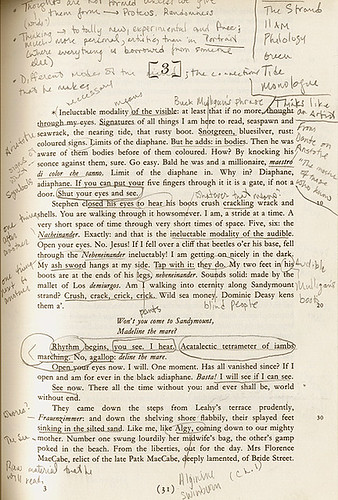
Athabasca University | AU Student/Staff Login | Invited Guest Login
- Wikis
- Mark A. McCutcheon
- Strategies for Close Reading and Critical Reflection
Strategies for Close Reading and Critical Reflection
- Public
- History
Close reading is a literary studies practice applicable to all kinds of cultural texts (e.g. films, novels, photographs, plays, etc.). Performing a close reading means making an interpretive argument about a text or texts, through detailed attention to and critical reflection on textual form and detail.
Examples: For a sample close reading of a dramatic text, see this scene analysis of Oedipus for English 303. For a sample close reading of visual texts, see this student blog post about war propaganda posters.
See also: How to read literary form: sample comments on student work
Strategies for close reading
Four steps for close reading
General categories for analyzing texts
Specific tips for reading analytic prose: essays, articles, and arguments
Tips for becoming more critically reflective in close reading
References
 1. Read and write at the same time: annotate the text
1. Read and write at the same time: annotate the text
* Write on the text: what strikes you as surprising or significant, or that raises questions
* Look at not just what is written, but how it is written
* Note odd or unknown words, references, striking images, points of view, connotations, and/or associations
* Assume that everything in a given excerpt is potentially significant
2. Look for patterns, narrow the scope
* Review your notes and highlighted words or phrases
* What are possible patterns and/or connections among things you have marked?
* Note details that compare to or contrast other parts of the whole work--or to other texts (intertexts)
* Note overarching issues or themes
3. Explore, analyze, reflect
* Follow up on your notes and questions from steps 1 and 2
* Why these words, images, examples, stylistic choices, and not others? What does the text not say?
* Explore details, patterns, associations, or themes that you think are particularly interesting
* In critical works: look for problems or leaps of logic
* Relate noted details to explicit themes (i.e. those clearly evident or stated in text) and implicit themes (i.e. those abstractly evoked, or even suppressed)
4. Draw conclusions: make an argument that textual evidence and your reading can support
* Take a position on the text that the evidence you have noted can support
* Try to be as clear and specific as possible in your close reading
* Develop an insight or interpretation that is not obvious or self-evident (e.g. not a plot summary, or a lecture recap)--awaken your reader's curiosity
Steps 3 and 4 involve critical reflection:
* use evidence to question the causes or premises of an object under study
* engage with ambiguities about culture, systems, self, authority, meaning
* ask "How did this occur?", "Why?", and/or "How do I know this?"
* integrate academic learning: critically examine terms, theories, concepts, and discussions
from this and/or other courses or knowledge repertoires
General categories for analyzing texts
Subject: what is the text about? (What is its apparent "content"?)
Structure: What is the organizing principle of the text's overall form? What determines the selection and arrangement of its subject matter or narrative?
Development: how does the text develop? How do elements like setting, character, point of view, and plot establish the text's structure and advance its subject or story?
Style: What distinctive diction, images, figures, patterns, and symbols are used?
Tone: what is the text’s attitude to its subject, and/or to its audience?
Theme: what is a major theme in the text? How do the categories above develop this theme?
Specific tips for reading analytic prose: essays, articles, and arguments
* identify the main argument (the thesis)
* itemize the argument's main supporting points
* trace how the argument is organized
* tease out the argument's premises and assumptions
* interrogate the argument’s organization and premises: in framing an argument a certain way, and in basing it on certain assumptions, what other frameworks and assumptions does the article conceal or neglect?
Tips for becoming more critically reflective in close reading
* compare and contrast to similar or dissimilar texts
* seek the text's framework, theoretical basis, or supporting rationale
* consider various perspectives and alternative theories on the text
* identify contexts (e.g. historical, political, economic)
* think about causes and effects
Further references
Clark, Don. "Critical Reflection."
Kain, Patricia. "How to do a close reading."
Lye, John. "Critical reading: a guide."
Lynch, Jack. "Getting an A on an English Paper"
Short link: http://is.gd/Ac3t55
Photo: "Ulysses" courtesy of Cobra Libre, used under CC 2.0 license
Mark A. McCutcheon
Welcome to the Landing
The Landing is a social site for Athabasca University staff, students and invited guests. It is a space where they can share, communicate and connect with anyone or everyone.
Unless you are logged in, you will only be able to see the fraction of posts on the site that have been made public. Right now you are not logged in.
If you have an Athabasca University login ID, use your standard username and password to access this site.
Adding comments to this site
We welcome comments on public posts from members of the public. Please note, however, that all comments made on public posts must be moderated by their owners before they become visible on the site. The owner of the post (and no one else) has to do that.
If you want the full range of features and you have a login ID, log in using the links at the top of the page or at https://landing.athabascau.ca/login (logins are secure and encrypted)
Disclaimer
Posts made here are the responsibility of their owners and may not reflect the views of Athabasca University.



